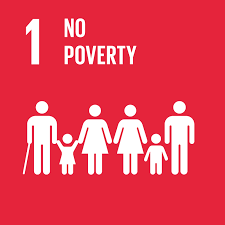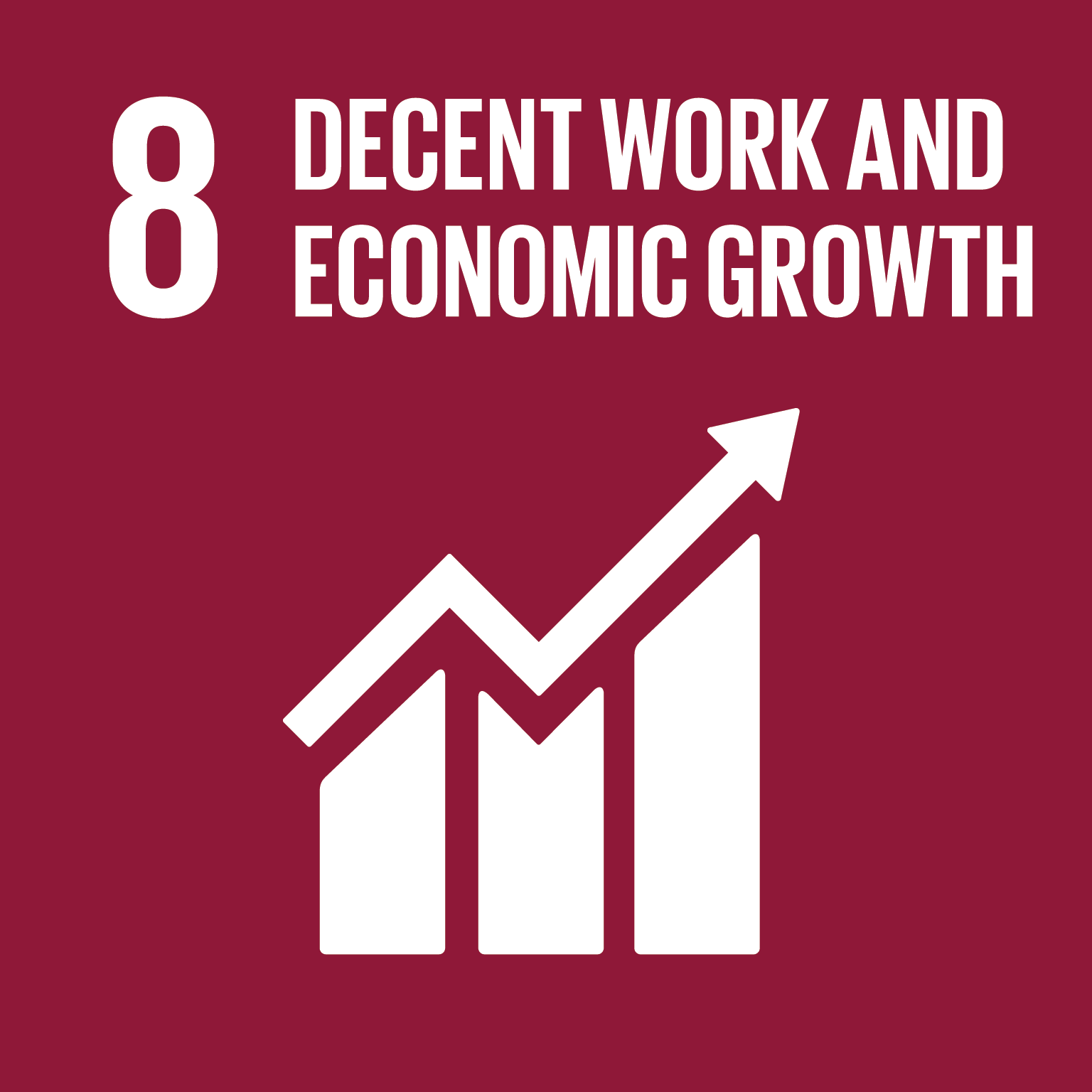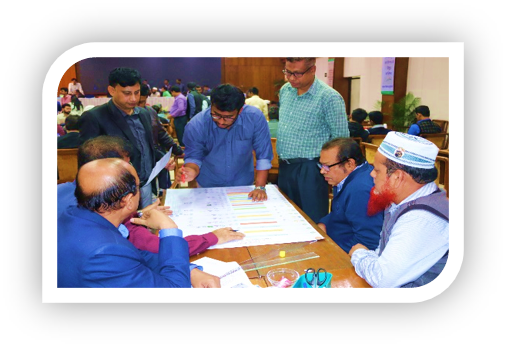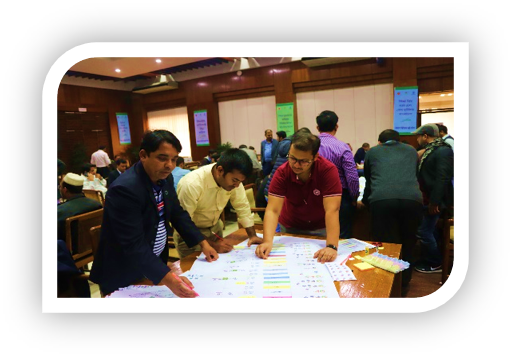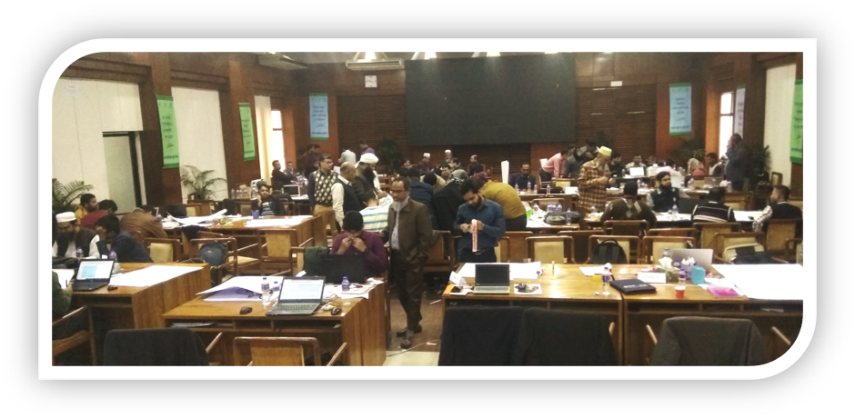Accelerating Digital Transformation in All Ministries in Bangladesh
Promoting the rapid design and implementation of plans to digitize all ministries and subordinate government institutions in Bangladesh
Challenges
It usually takes several weeks or months to access government services because there are several steps that must be done manually. Given that basic services are centralized, citizens must travel long distances to access them. In addition, departments become overloaded, which causes delays. The manual process comes at a cost in terms of procurement efforts and the time and budget of the Government, as well as the valuable time of its citizens. Moreover, in an emergency, citizens have difficulty receiving immediate services. Transparency and accountability in service delivery are also difficult to ensure with a manual process. All government services must therefore be digitized and simplified in order to achieve the ‘Digital Bangladesh Vision?2021’ and provide services at citizens’ doorsteps.
Towards a Solution
To mitigate these challenges, the ‘Digital Service Accelerator’ initiative of the Aspire to Innovate (a2i) Programme played a coordination role with its technical knowledge and expertise to support government agencies. In 2017, a2i introduced the ‘Digital Service Implementation Plan?2021’, along with a unique and innovative methodology called ‘Digital Service Design Lab’ (DSDL), to execute the plan within the timeframe. This rapid methodology condenses the pre-procurement period from 12–14 months to 6–7 days. At the ministerial level, all planned digital services, functions and existing software will be integrated into a single platform. This methodology provides savings in terms of procurement efforts, time and the government budget. The rapid design and development, which involved government officials and local information technology resources, proved very effective.
If this initiative is executed successfully nationwide and promoted internationally, it will meet Sustainable Development Goal?10 on reducing inequalities within and among countries.
The objectives of the DSDL are to simplify government services with digitalization and ensure that they are delivered at citizens’ doorsteps. The specific aims are as follows:
- Implement fast and effective digital services by 2021
- Demonstrate demand for digital services and simplify the design and overall planning
- Ensure standardization, interoperability and integration among all national systems
- Achieve savings in terms of procurement efforts, time and budget
The DSDL is arranged in collaboration with various ministries or government institutions. The services they provide are analysed in advance, and groups are created based on the results. A workshop is held to create a tangible output, which could include an analysis of the existing service delivery process, identification of the digital system’s module and features, the interface for the beneficiary and service provider, a functional flow diagram, digital service module design, a pilot implementation plan, efficiency analysis (time, cost, visit), a user management plan, software development budget, pilot implementation budget, an integration management plan or design specifications. As a result of the workshop, an integrated service delivery platform is designed for all the relevant existing services provided by the ministry concerned. This methodology is unique in that both the service recipients and service providers are involved in the process.
In the first phase, workshops were held in accordance with the ‘Digital Service Implementation Plan?2021’. Participants were divided into 49?groups made up of 56?ministries, 349?organizations and 1,792?government officials. Of the systems identified, 1,856 were required, 597 were in operation and 273 were under development. The closing ceremony was attended by 4 ministers, 45 secretaries and 353?managing directors. The second phase, which began in 2019, involves 24?ministries. To date, 26?DSDL have been created, 915?services have been covered and 10 services are under procurement.
The implementation of this methodology has achieved a standardized, interoperable and distinctive digital system through an integrated service delivery platform. There have been significant savings in government resources and a significant reduction in the time, cost and number of visits required for service delivery. Through the DSDL, the software industry of Bangladesh receives ample new opportunities for work. Through digitalization, the transparency and accountability of the service delivery process is ensured, which improves social morale. Finally, citizens become more aware of their rights, information and regulations.
The DSDL methodology seems to be very effective in knowledge-sharing, responsiveness and cooperation. This innovative methodology, which is currently popular in Bangladesh, is gradually gaining traction beyond its borders as well. In Fiji, a modified version of this initiative has already been launched, and the Government of the Philippines has expressed interest in implementing it in the province of Bangsamoro.
The DSDL model is sustainable, as ministry officials and civil servants are directly involved in this process and participate in the design and implementation of the service. As a result, ownership and accountability are ensured.
Every ministry and directorate is required to digitize their manual services to align with Vision 2021. To date, 24?ministries have accomplished this with the help of the a2i Digital Service Accelerator unit, and every ministry will eventually complete this process. This initiative can therefore be replicated within Bangladesh. It can also be adapted to meet the needs of countries in the global South.
Contact Information
Mr Forhad Zahid Shaikh, Chief eGovernance Strategist, Aspire to Innovate (a2i) Programme
Countries involved
Bangladesh, Fiji, Philippines
Implementing Entities
a2i Programme, Government of Bangladesh; UNDP Bangladesh
Project Status
Ongoing
Project Period
2018
URL of the practice
dsa.a2i.gov.bdPrimary SDG
09 - Industry, Innovation and Infrastructure
Secondary SDGs
10 - Reduced Inequalities
Primary SDG Targets
9.1 9.a 9.bSimilar Solutions


